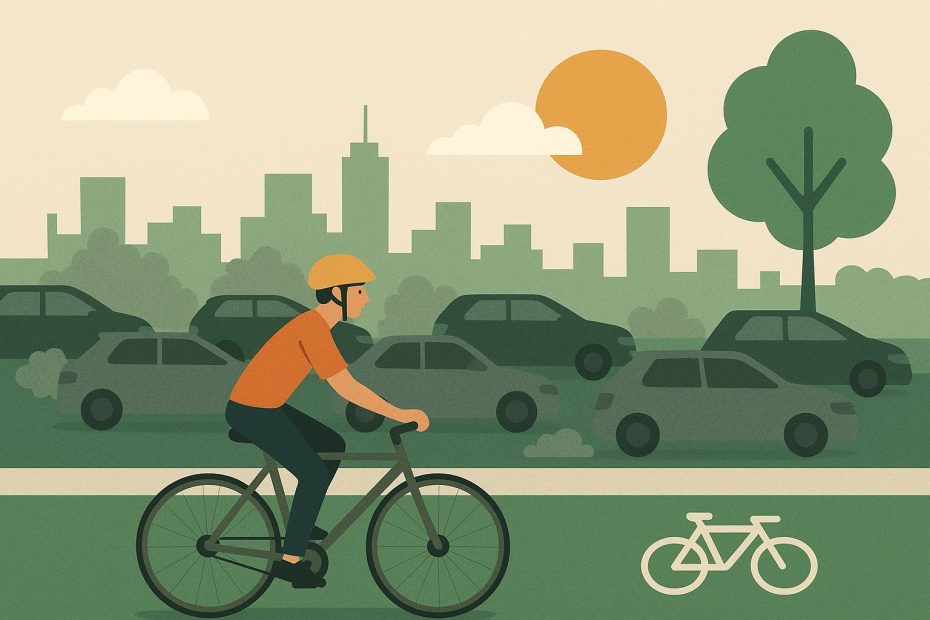Residents in Western Sydney are seeing longer traffic bottlenecks as the city warms more quickly than coastal locations. Climate change and cycling have related problems and solutions. Increased cycling can improve street health, relieve traffic, and lower carbon emissions.
Cars, Climate Stress, and the Case for Change
Private automobiles emit 180g of CO₂ per kilometre, accounting for 60% of city transportation emissions. Bikes, on the other hand, hardly emit anything. This disparity emphasises how crucial it is to reduce automobile emissions in Sydney to create a future that is climate resilient. The urban heat in Western Sydney is exacerbated by pollutants, which cause summertime temperatures on sidewalks to rise beyond 50°C. Bicycling instead of driving for a portion of the time lowers greenhouse gas emissions and cools roadways by lowering traffic and idle engines.
Pedals over Petrol: Cooling and Quieting the Suburbs
Cycling solves multiple problems at once and significantly reduces CO2 emissions. Bikes only produce around 10 dB of noise at 50 km/h, compared to 72 dB for cars. Neighbourhoods with fewer cars are calmer, and residents experience less stress. Regular bike traffic also improves bus and car movement by reducing traffic congestion. By lowering particulate matter that aggravates asthma, which is already 20% worse in Western Sydney than the national average, this balance improves urban air quality.
Building the Network: From Pop‑Ups to Permanence
For genuine change, infrastructure is essential. Protected pathways can fast-track bike use, as demonstrated with pandemic pop-up lanes. It is wise urban planning to integrate these into a network that will provide long-term advantages. Separate bike lanes can enhance traffic, the environment, and health for up to $5 for every dollar invested. These advantages are increased when cycling is included in larger transportation systems, such as ticketing that combines bike parking with rail transit.
Policies and People Power
From Parramatta to Penrith, councils are incorporating curb side lanes, end-of-trip showers, and safe parking into their local plans as part of the draft Western Sydney active transport policy. In the meantime, grassroots groups like Ride Blue Mountains, Western Sydney Cycling Network, and CAMWEST provide support and initiatives about “”confident commuting” classes, emphasising that riding a bike to combat climate change also promotes community. Their involvement reveals a latent demand: if they felt comfortable, 75% of locals would ride frequently.
Proof in the Pedalling
About 40 g of CO₂ is released every passenger km by suburban trains, 105 g by diesel buses, and 180 g by private vehicles. Bicycles produce less than 10 g of emissions, including manufacturing and rider food energy. Funding for climate resilience is supported by this data. Western Sydney could save 2.3 million peak-hour hours lost to traffic and cut CO₂ emissions by almost 150,000 tonnes a year if 10% of short trips (less than five kilometres) are switched to bicycles.
Pedalling Toward a Cooler, Quieter Future
With its natural spaces, bustling streets, and well-maintained roads, Western Sydney could emerge as Australia’s premier cycling destination in the coming 10 years. Bikes are first viewed as vital instruments for cutting pollution, decreasing traffic, and saving time. Steering towards sustainability is not only feasible but is now taking place with the help of the community, wise investment, and governmental backing.
